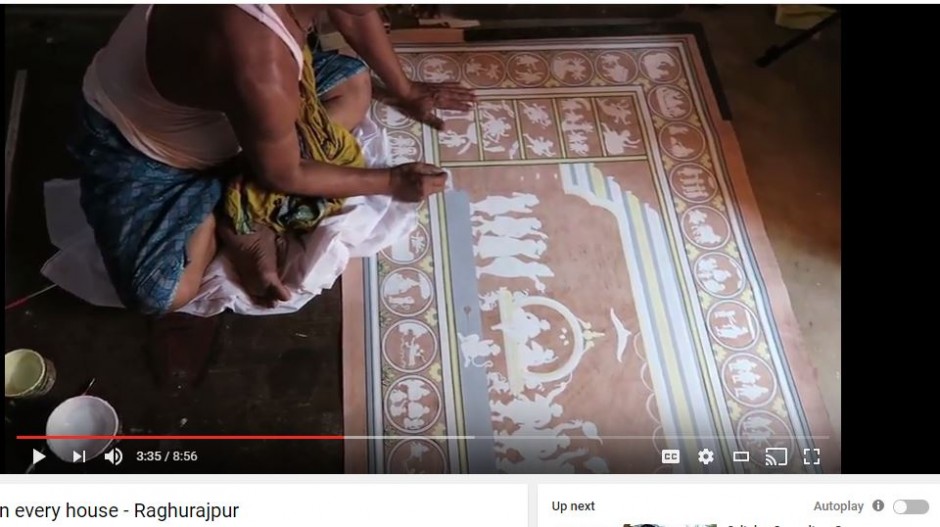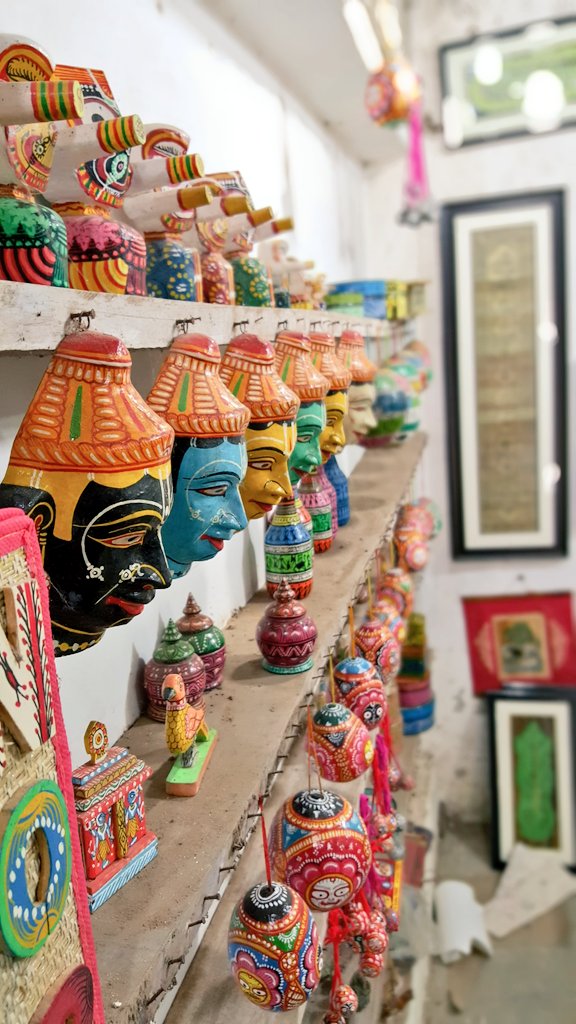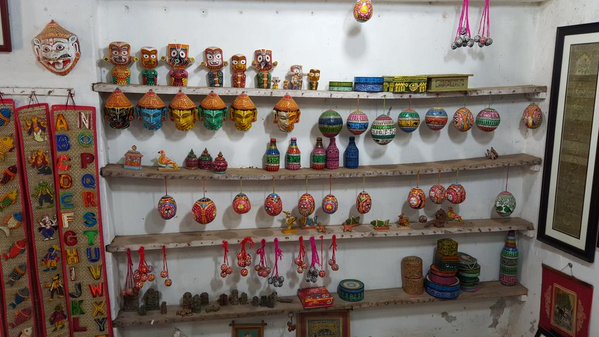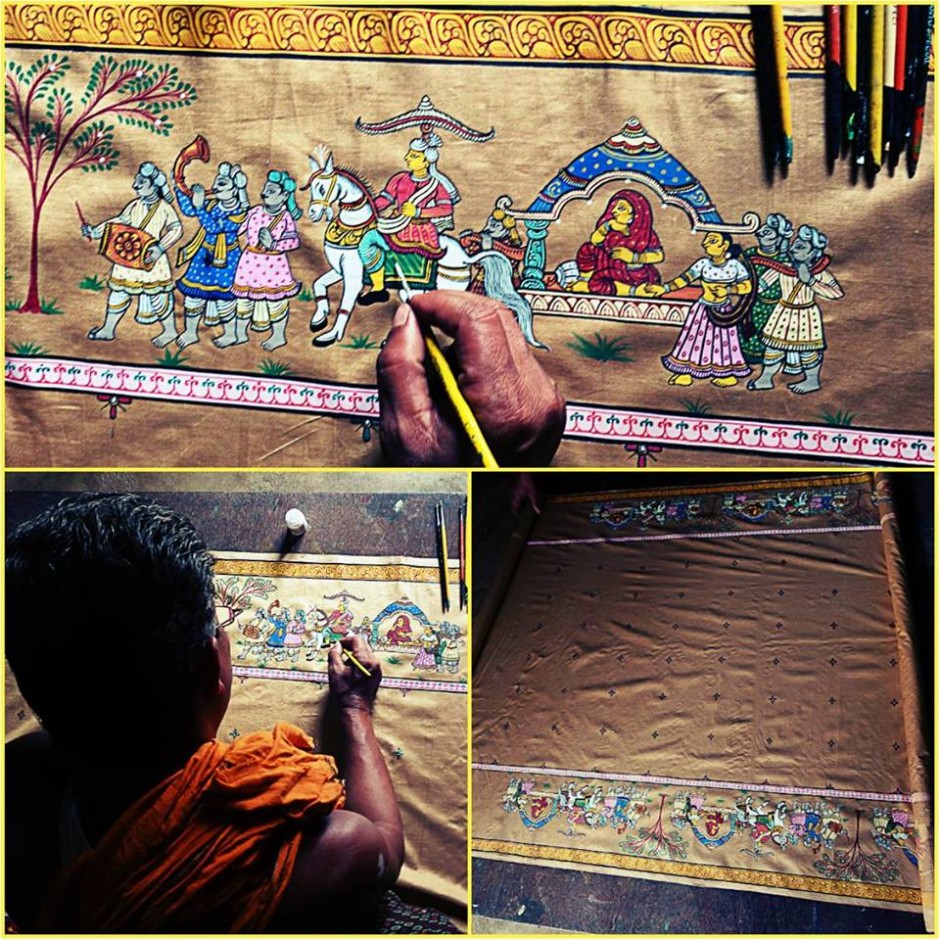The lush little village of Raghurajpur in Odisha is the keeper of an ancient legacy. Situated a half-hour drive away from Puri, Raghurajpur has at least one artist in each of its 120-odd homes. Each family is dedicated to the making of a traditional handicraft, made entirely from indigenous materials sourced from the surrounding coconut, palm and jackfruit groves on the banks of River Bhargavi.
Some families specialise in the making of the patachitra, a style of painting on cloth. Others engrave folklore onto palm leaves, or turn coconuts and betel nuts into miniatures of Lord Jagannath, Odisha’s most prominent deity. The community excels in making stone carvings, papier mâché masks, and paintings on tassar silk.
Patachitra is Raghurajpur’s most famed art form, and the paintings have been traced as far back as the 12th century. The style is said to have evolved under the cult of Lord Jagannath, and the paintings are still used in rituals at the Jagannath Temple in Puri. Not much has changed in the rendering. In Oriya, pata means cloth and chitra means picture. The canvas or patta is prepared by binding two layers of cotton with a gum made of powdered conch shell and tamarind seeds. Stones are used to polish the surface until it is a smooth base for the painting. Artists use vibrant hues and delicate lines to portray stories from the Ramayana and Mahabharata. The pigments used are natural, such as white from conch shells, and black from lamp black and burned coconut shells. In fact, the only new flourishes are that some artists prefer to use poster colours today.
Raghurajpur also draws travellers and artists for its practice of talapatrachitra, or palm-leaf engraving. The yellow-green leaves are stuck together to form strips that are then sewn together with thread. The artist uses an iron stylus to etch scenes from the epics between the veins of the leaves, and may fill in the grooves with lamp black or another pigment. It takes a practiced hand to ensure the leaf doesn’t crack.




